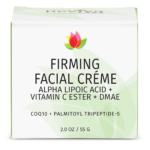Eczema
Eczema is an inflammatory skin condition characterized by itching, redness, blisters, and cracked, scaly skin. It is most commonly caused by an allergic reaction, but it can also be triggered by environmental factors, such as cold temperatures. Eczema is the most common form of dermatitis, and it can affect people of all ages. Treatment for eczema usually involves avoiding triggers, moisturizing the skin, and taking medications to reduce inflammation and itching. In more severe cases, topical steroids may be prescribed.
Dermatitis is inflammation of the skin, typically characterized by itchiness, redness and a rash. In cases of short duration, there may be small blisters, while in long-term cases the skin may become thickened. The area of skin involved can vary from small to covering the entire body. Dermatitis is often called eczema, and the difference between those terms is not standardized.
| Atopic dermatitis | |
|---|---|
| Other names | Eczema |
 | |
| A moderate case of dermatitis of the hands | |
| Specialty | Dermatology |
| Symptoms | Itchiness, red skin, rash |
| Complications | Skin infection |
| Causes | Atopic dermatitis, allergic contact dermatitis, irritant contact dermatitis, seborrhoeic dermatitis, stasis dermatitis |
| Diagnostic method | Based on symptom |
| Differential diagnosis | Scabies, psoriasis, dermatitis herpetiformis, lichen simplex chronicus |
| Prevention | Essential fatty acids |
| Treatment | Moisturizers, steroid creams, antihistamines |
| Frequency | 245 million in 2015 (3.34% of world population) |
The exact cause of the condition is often unclear. Cases may involve a combination of allergy and poor venous return. The type of dermatitis is generally determined by the person's history and the location of the rash. For example, irritant dermatitis often occurs on the hands of those who frequently get them wet. Allergic contact dermatitis occurs upon exposure to an allergen, causing a hypersensitivity reaction in the skin.
Prevention of atopic dermatitis is typically with essential fatty acids, and may be treated with moisturizers and steroid creams. The steroid creams should generally be of mid- to high strength and used for less than two weeks at a time, as side effects can occur. Antibiotics may be required if there are signs of skin infection. Contact dermatitis is typically treated by avoiding the allergen or irritant. Antihistamines may help with sleep and decrease nighttime scratching.
Dermatitis was estimated to affect 245 million people globally in 2015, or 3.34% of the world population. Atopic dermatitis is the most common type and generally starts in childhood. In the United States, it affects about 10–30% of people. Contact dermatitis is twice as common in females as males. Allergic contact dermatitis affects about 7% of people at some point in their lives. Irritant contact dermatitis is common, especially among people with certain occupations; exact rates are unclear.









